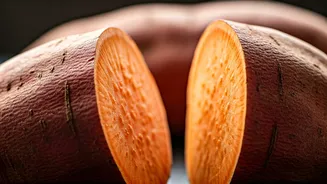The Skin Microbiome
Our skin is far more complex than just a barrier; it's home to a diverse ecosystem known as the skin microbiome. This intricate network is composed of
bacteria, fungi, and viruses, all working together to maintain the skin's health. The microbiome acts as a protective shield against harmful pathogens and influences various skin functions, from immunity to inflammation. A balanced skin microbiome leads to a healthy complexion. However, imbalances, such as disruptions to this delicate ecosystem, can result in issues such as acne, eczema, and premature aging. Factors like pollution, harsh soaps, and even stress can disrupt the balance, emphasizing the importance of nurturing this hidden world.
Probiotics' Powerful Impact
Probiotics, living microorganisms, are often hailed as the good guys. When applied topically or ingested, they can boost the skin's defense systems. They combat harmful bacteria, reducing inflammation and supporting overall skin health. Research suggests probiotics can improve skin conditions such as acne, rosacea, and eczema. These helpful bacteria work by strengthening the skin barrier, creating a more robust shield against environmental stressors. This barrier helps retain moisture, and protect against irritants. Incorporating probiotic-rich skincare or supplements can be a proactive step towards a clearer, calmer, and more resilient complexion. The beauty of probiotics lies in their ability to work in harmony with the body's natural processes, promoting long-term skin health.
Prebiotics: Feeding the Good
Prebiotics are the unsung heroes, acting as food for the probiotics. They are non-digestible fibers that feed and nourish the beneficial bacteria residing in your skin's microbiome. By providing these essential nutrients, prebiotics help the probiotics to thrive, leading to a flourishing ecosystem. By creating the right environment, prebiotics foster the growth of healthy bacteria, contributing to a balanced microbiome. This can lead to clearer, calmer skin. Incorporating prebiotic ingredients in skincare helps maintain an optimal skin environment. You can find prebiotics in various products, including cleansers, serums, and moisturizers. Using prebiotics alongside probiotics creates a symbiotic relationship, maximizing the benefits for your skin.
Postbiotics' Active Role
Postbiotics represent the next frontier in skincare. They are the byproducts created when probiotics consume prebiotics. These bioactive compounds encompass various beneficial substances like peptides, vitamins, and organic acids. Postbiotics, unlike their live probiotic counterparts, are not living microorganisms. They offer direct benefits to the skin, helping to soothe, hydrate, and protect. For instance, postbiotics can have anti-inflammatory and antioxidant properties, helping to calm irritated skin and combat free radical damage. Postbiotics work directly on the skin's surface, providing tangible results like reduced redness and improved skin texture. These substances help to support skin health by providing all the benefits without the potential challenges associated with live bacteria, making them a well-tolerated and effective option for sensitive skin types.
Combining the Power
The synergistic action of probiotics, prebiotics, and postbiotics is the key to maximizing skincare benefits. Using these ingredients in combination creates a holistic approach to skin health. Probiotics bring the live cultures, prebiotics fuel them, and postbiotics deliver direct benefits, resulting in a robust, balanced microbiome. A well-rounded skincare routine incorporates all three. Look for products that combine these elements to promote a healthy skin ecosystem. These ingredients complement each other, offering a comprehensive strategy for achieving healthy, radiant skin. Considering these options can lead to improved hydration, reduced inflammation, and a strengthened skin barrier, ultimately enhancing the skin's overall appearance and resilience.














